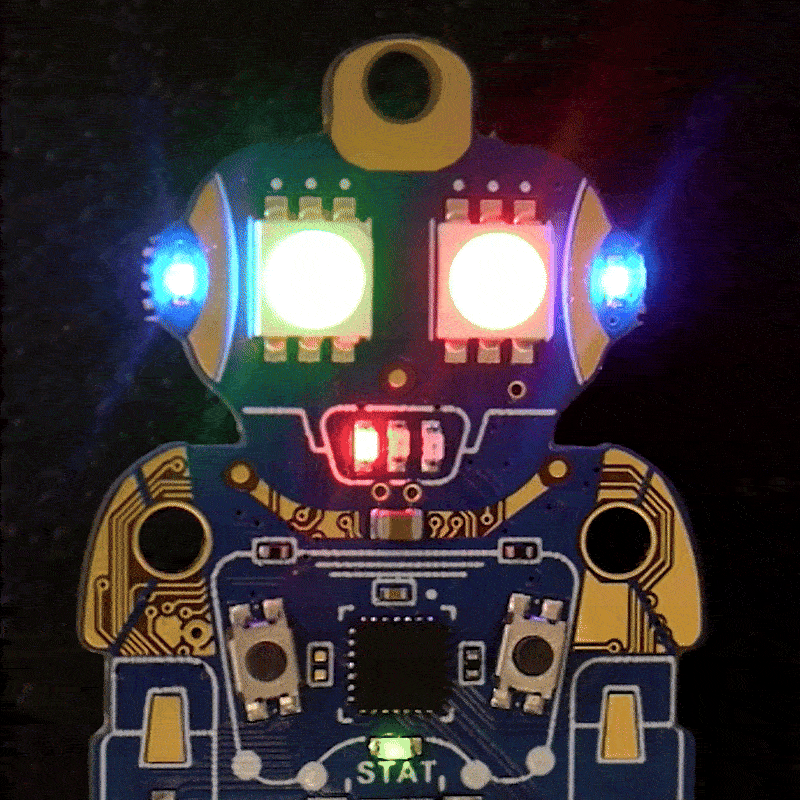Standalone
DUELink is designed from the ground up to work with your favorite hardware and your favorite language. For example, you can use a phone to control a daisylink of DUELink modules.

We call the device controlling the other DUELink modules a "host". This host will be running one of the provided libraries, like Python for example. Similar to a phone or PC, you can use a Raspberry Pi or an Arduino.

Additionally, DUELink modules are self-contained mini-computers that can also run standalone. In this case, the first module (button in this case) is the "Host", which is controlling the other Daisylinked modules. The power modules (red ones) are just a power sources.

There are multiple options that you can use to turn any DUELink module into a "host", running standalone:
- Scripting
- MicroBlocks
- C++
- Arduino

DUELink Scripting Engine

This is the easiest option and most versatile. The default firmware already includes an Internal Engine that has a Scripting language. It is easy to learn, making it a great choice for educators, yet it is flexible enough to run complete applications for Makers and Engineers.
Visit the Internal Engine and Scripting language pages for more details.
Modules can also become a Host() to other modules, as explained on the Daisylink page.
MicroBlocks

This is a block-based coding option, a great choice for educators, young learners, or anyone interested in coding but without "typing" the code!
Visit MicroBlocks language page to get started.
C++

ST Micro offers STMCubeIDE as a complete solution to program STM micros. It is free and complete with many options.
Another option is Keil MDK, which is what we use at GHI Electronics. This is a commercial-grade paid-software, but it is licensed to be used for free on STM32C071.
Visit the C++ page to learn more.
Arduino

Arduino is basically C++ but with easier user-friendly libraries and a very large community.
The Arduino page shows how to use it with DUELink modules in 2 ways, one with using Arduino as a host and second by loading Arduino on a DUELink module.